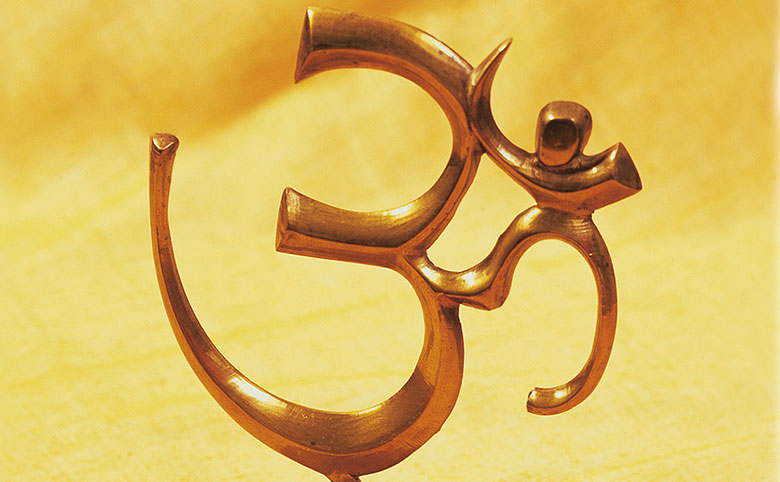
Long ago, the essence of Yoga was revealed in the world’s oldest spiritual scriptures, the Vedas [1]. For many centuries, before these texts were written, the Holy traditions were transmitted orally from Master to disciple. In this way the original message was preserved for no verse in Sanskrit, not even one letter, can be omitted or altered without the grammatical structure and meter also being disturbed.
Academics believe that the oldest verses and philosophical texts of the Vedas came into existence long before India’s ancestors migrated from the North. Therefore, this dates the Vedas as being in existence many years before the birth of Christ.
Maharishi Vyasa (also known as Veda Vyasa) compiled the Vedic verses and transcribed them into text. In all, there were four Vedas recorded by Maharishi Vyasa - the Rig Veda, the Sama Veda, the Yajur Veda and the Artharva Veda.
The Vedas contain Hymns, Prayers and Mantras as well as instructions for the performance of sacred ceremonies. The Vedas also contain profound philosophical and spiritual discourses on life and death, the material and the spiritual, the genesis of the Universe, the soul and God - without the restriction of a particular concept of God, or divinity. In those days the Vedas were only understood by the initiated. Yogis and spiritual Masters wrote explanations and commentaries on the Vedas. The most important are the Upanishads, which are a record of the philosophical discourses exchanged between Masters and their Disciples. These deal with the spiritual essence of the Vedas.
In due time, six philosophical schools of thought (Shastras) arose from the Vedas and the Upanishads. Of these, three have a direct link to Yoga: the Vedanta Shastra, Sankhya Shastra and Yoga Shastra. The philosophical teachings of Yoga are found in the Vedanta Shastra [2]; the scientific basis is formulated in the Sankhya Shastra; and the principles and techniques of Raja Yoga are enumerated in the Yoga Shastras, written by Rishi Patanjali (approximately 200 BC).
One more fundamental Yoga text is the Bhagavad Gita. It deals with ethics, the conception of the world and the theory of Knowledge, as well as offering practical guidance for the attainment of Self-Knowledge and Realisation through the path of Yoga.
Many Saints and spiritual Masters preserve and spread the message of Yoga.
Comment of the publisher:
The author Paramhans Swami Maheshwarananda is also part of a lineage, connected to a “line of Masters” through which the message of Yoga is kept alive and passed on. His Masters are:
Sri Alakh Puriji, the legendary Master of the Himalayas of whom it is said that at will, he can materialise and disappear. He is accompanied by his disciples who from time to time appear and also become visible with him.
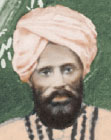 Following him is Paramyogeshwar Sri Devapuriji who is regarded as an embodiment of the power of Shiva. Sri Devapuriji resided in Sikar District, Rajasthan (Northwest India) from the mid 19th century until he left his body in 1944.
Following him is Paramyogeshwar Sri Devapuriji who is regarded as an embodiment of the power of Shiva. Sri Devapuriji resided in Sikar District, Rajasthan (Northwest India) from the mid 19th century until he left his body in 1944.
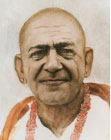 He is the Master of Sri Deep Narayan Mahaprabhuji who also lived and taught in Rajasthan. Sri Mahaprabhuji was born enlightened, a true incarnation of love and wisdom. The essence of his teachings is: “Love each and every living being at least as much as you love yourself.” Sri Mahaprabhuji left this world in the year of 1963 at the age of 135.
He is the Master of Sri Deep Narayan Mahaprabhuji who also lived and taught in Rajasthan. Sri Mahaprabhuji was born enlightened, a true incarnation of love and wisdom. The essence of his teachings is: “Love each and every living being at least as much as you love yourself.” Sri Mahaprabhuji left this world in the year of 1963 at the age of 135.
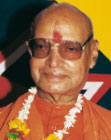 His spiritual successor was Paramhans Sri Swami Madhavananda who lived in his Ashram in Rajasthan and worked for the welfare of the world through prayer and meditation. He wrote the life story of his Master in the book “Lila Amrit - the Divine Life of Sri Mahaprabhuji”. On October 31, 2003, he left this world and attained Mahasamadhi.
His spiritual successor was Paramhans Sri Swami Madhavananda who lived in his Ashram in Rajasthan and worked for the welfare of the world through prayer and meditation. He wrote the life story of his Master in the book “Lila Amrit - the Divine Life of Sri Mahaprabhuji”. On October 31, 2003, he left this world and attained Mahasamadhi.
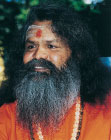 His successor, Sri Mahamandaleshwar Paramhans Swami Maheshwarananda (called “Swamiji”) carried the message of Yoga to Europe, America and Australia. He founded the system “Yoga in Daily Life”. His service in the advancement of physical, mental, social and spiritual health has been honoured and recognised worldwide, for which he has received many international awards. In India the honorary titles of “Doctor of Yoga” and “Professor of the Spiritual Science of Yoga” have been conferred upon him. In April 1998 he was ordained as Mahamandaleshwar of the Holy order of Maha Nirvana Akhara.
His successor, Sri Mahamandaleshwar Paramhans Swami Maheshwarananda (called “Swamiji”) carried the message of Yoga to Europe, America and Australia. He founded the system “Yoga in Daily Life”. His service in the advancement of physical, mental, social and spiritual health has been honoured and recognised worldwide, for which he has received many international awards. In India the honorary titles of “Doctor of Yoga” and “Professor of the Spiritual Science of Yoga” have been conferred upon him. In April 1998 he was ordained as Mahamandaleshwar of the Holy order of Maha Nirvana Akhara.